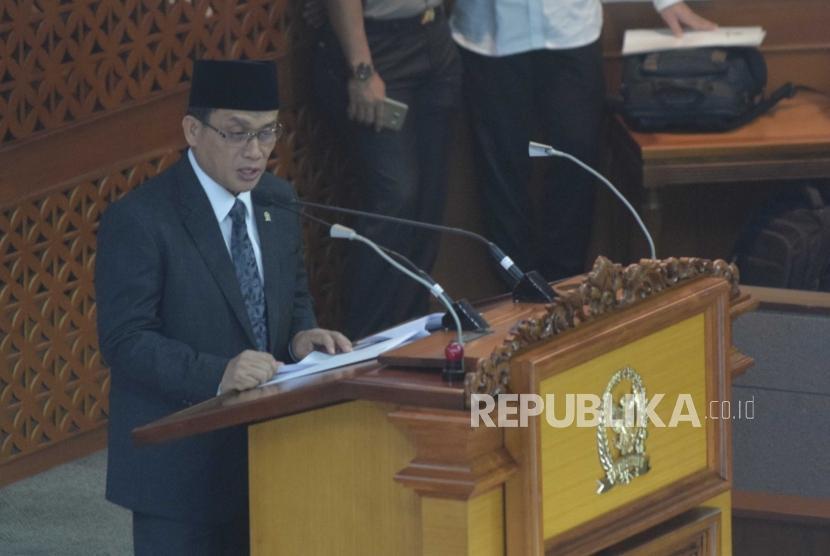REPUBLIKA.CO.ID, JAKARTA -- House of Representatives (DPR) plenary meeting has endorsed the revision of Law No.15 Year of 2003 on the Stipulation of the Government's Regulation In Lieu of Law No.1 Year of 2002 on counterterrorism. There is a substantial addition that strengthened the previous law.
One of added points is provision of victims protection. It is set comprehensively, started from definition of victim, scope of victim, to the rights of victim.
Terrorism Special Committee Chairman Muhammad Syafii revealed the norm about terrorism victims in Law No. 15 Year 2003 only regulated compensation and restitution. However, the new Anti-Terrorism Law will grant other rights for victims, such as medical assistance, psychological rehabilitation, compensation benefits for victims, and restitution.
Syafii said the provision of rights to terrorism victims is set out in Article 35A, Article 36, Article 36A and Article 36B. In addition, the new Anti-Terrorism Law would not only apply forward but also retroactively, the bomb victims that occurred before the law was passed.
Draft Law on terrorism has regulated granting the rights for victims, even before the bill is passed, Syafii added.
Victims in Anti-Terrorism Law is divided into two, namely direct and indirect victims. Direct victims in Article 35 paragraph 2 letter A is victims who directly experience and feel the consequences of terror act. For example the victim died or seriously injured due to bomb explosion.
Meanwhile, indirectly victims in Article 35 paragraph 2 letter b mean people who rely their lives on the direct victims. For example a wife who lost a husband who is a direct victim.
The mechanism for applying for compensation stipulated in the norm of Article 36. In the elucidation of the article stated the compensation mechanism filed from the investigation stage.
Furthermore, the prosecutor submitted, the amount of losses suffered by victims as a result of terrorism along with the demands. The amount of compensation is calculated proportionally and rationally based on material and immaterial losses.


